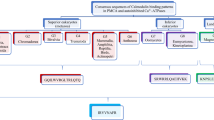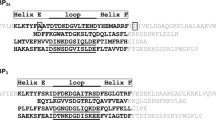Abstract
We have previously reported on calcium transport mechanisms in American lobster, Homarus americanus, using 45Ca2+ coupled with vesicle preparations of hepatopancreatic endoplasmic reticulum. The active transport of calcium across membranes bordering calcium-sequestering stores such as sarcoplasmic or endoplasmic reticulum is catalyzed by membrane-spanning proteins, the sarco-endoplasmic Ca2+-ATPases (SERCAs). In the study described here we used advanced bioinformatics and molecular techniques to clone SERCA from the economically important Caribbean spiny lobster, Panulirus argus. We report the complete cloning of a full-length SERCA from P. argus antenna cDNA (GenBank accession number AY702617). This cDNA has a 1020-amino acid residue open reading frame which is 90% identical to published sequences of other crustacean SERCA proteins. Our data support the hypothesis that one crustacean and three vertebrate genes controlling calcium transport were derived from a common ancestral gene.







Similar content being viewed by others
References
Ahearn GA, Franco P (1993) Ca2+ transport pathways in brush-border membrane vesicles of crustacean antennal glands. Am J Physiol 264:R1206–R1213
Altschul SF, Gish W, Miller W, Myers EW, Lipman DJ (1990) Basic local alignment search tool. J Mol Biol 215:403–410
Brandl CJ, DeLeon S, Martin DR, MacLennan DH (1986) Two Ca2+ ATPase genes: homologies and mechanistic implications of deduced amino acid sequences. Cell 44:597–607
Brandl CJ, DeLeon S, Martin DR, MacLennan DH (1987) Adult forms of the Ca2+ ATPase of sarcoplasmic reticulum: expression in developing skeletal muscle. J Biol Chem 262:3768–3774
Chen D, Zhang Z, Wheatly MG, Gao Y (2002) Cloning and characterization of the heart muscle isoform of sarco/endoplasmic reticulum Ca2 + ATPase (SERCA) from crayfish. J Exp Biol 205:2677–2686
Chomczynski P, Sacchi N (1987) Single-step method of RNA isolation by acid guanidium thiocyanate-phenol-chloroform extraction. Anal Biochem 162:156–159
Escalante R, Sastre L (1996) Tissue specific expression of two Artemia franciscana sarco/endoplasmic reticulum Ca-ATPase isoforms. J Histochem Cytochem 44:321–325
Fan W, Li C, Li S, Feng Q, Xie L, Zhang R (2007) Cloning, characterization, and expression patterns of three sarco/endoplasmic reticulum Ca2+-ATPase isoforms from pearl oyster (Pinctada fucata). Acta Biochim Biophys Sin (Shanghai) 39(9):722–730
Hagedorn M, Weihrauch D, Towle DW, Ziegler A (2003) Molecular characterization of the smooth endoplasmic reticulum Ca2+-ATPase of Porcellio scaber and its expression in sternal epithelia during the moult cycle. J Exp Biol 206:2167–2175
Hecker KH, Roux KH (1996) High and low annealing temperatures increase both specificity and yield in touchdown and stepdown PCR. Biotechniques 20(3):478–485
Karin NJ, Kaprielian Z, Fambrough DM (1989) Expression of avian Ca2+-ATPase in cultured mouse myogenic cells. Mol Cell Biol 9(5):1978–1986
Kretsinger RH (1976) Calcium-binding proteins. Ann Rev Biochem 45:239–266
Kyte J, Doolittle RF (1982) A simple method for displaying hydrophobic character of a protein. J Mol Biol 157:105–132
Lytton J, Zarain-Herzberg A, Periasamy M, MacLennan DH (1989) Molecular cloning of the mammalian smooth muscle sarco(endo)plasmic reticulum Ca2+-ATPase. J Biol Chem 264(12):7059–7065
MacLennan DH, Brandl CJ, Korczak B, Green NM (1985) Amino-acid sequence of a Ca2+ Mg2+-dependent ATPase from rabbit muscle sarcoplasmic reticulum, deduced from its complementary DNA sequence. Nature 316:696–700
Magyar A, Varadi E (1990) Molecular cloning and chromosomal localization of a sarco/endoplasmic reticulum-type Ca2+-ATPase of Drosophila melanogaster. Biochem Biophys Res Comm 173:872–877
Mandal PK, Mandal A, Ahearn GA (2005a) Physiological characterization of 45Ca2+ and 65Zn2+ transport by lobster hepatopancreatic endoplasmic reticulum. J Exp Zool A Comp Exp Biol 303(7):515–526
Mandal A, Meleshkevitch E, Mandal PK, Boudko D, Ahearn GA (2005b) Cloning of sarco-endoplasmic reticulum Ca2+ ATP-ase (SERCA) from caribbean Spiny lobster Panulirus argus. FASEB J 19(4):A215
Maruyama K, Clarke DM, Fujii J, Loo TW, MacLennan DH (1989) Expresion of mutation of Ca2+ ATPase of the sarcoplasmic reticulum. Cell Motil Cytoskelet 14:26–34
Mattson MP, LaFerla FM, Chan SL, Leissring MA, Shepel PN, Geiger JD (2000) Calcium signaling in the RE: its role in neuronal plasticity and neurodegenerative disorders. Trends Neurosci 23:222–229
Matz MV (2002) Amplification of representative cDNA samples from microscopic amounts of invertebrate tissue to search for new genes. Methods Mol Biol 183:3–18
Matz MV (2003) Amplification of representative cDNA pools from microscopic amounts of animal tissue. Methods Mol Biol 221:103–116
Matz MV, Alieva NA, Chenichik A, Lukyanov SA (2003) Amplification of cDNA ends using PCR suppression effect and step-out PCR. Methods Mol Biol 221:41–49
Meleshkevitch EA, Assis-Nascimento P, Popova LB, Miller MM, Kohn AB, Phung EN, Mandal A, Harvey WR, Boudko DY (2006) Molecular characterization of the first aromatic nutrient transporter from the sodium neurotransporter symporter family. J Exp Biol 209:3183–3198
Palmero I, Sastre L (1989) Complementary DNA cloning of a protein highly homologous to mammalian sarcoplasmic reticulum Ca2+-ATPase from the crustacean Artemia. Mol Biol 210:737–748
Saitou N, Nei M (1987) The neighbor-joining method: a new method for reconstructing phylogenetic trees. Mol Biol Evol 4:406–425
Sepùlveda MR, Hidalgo-Sànchez M, Mata AM (2004) Localization of endoplasmic reticulum and plasma membrane Ca2+-ATPases in subcellular fractions and sections of pig cerebellum. Eur J Neurosci 19:542–551
Thompson JD, Gibson TJ, Plewniak F, Jeanmougin F, Higgins DJ (1997) The CLUSTAL_X windows interface: flexible strategies for multiple sequence alignment aided by quality analysis tools. Nucleic Acids Res 25(24):4876–4882
Wu KD, Lytton J (1993) Molecular cloning and quantification of sarcoplasmic reticulum Ca2+-ATPase isoforms in rat muscles. Am J Physiol 264:C333–C341
Zhang Z, Chen D, Wheatly MG (2000) Cloning and characterization of Sarco/Endoplasmic reticulum Ca2+ ATPase (SERCA) from crayfish axial muscle. J Exp Biol 203:3411–3423
Zhuang Z, Ahearn GA (1998) Energized Ca2+ transport by hepatopancreatic basolateral plasma membranes of Homarus americanus. J Exp Biol 201:211–220
Acknowledgments
This work was supported by NSF grant IBN04-21986 and NIH grant 2RO1 A1030464-13A1. The first two authors made equal contributions to the laboratory experiments. We thank Dr. Melissa Miller of Whitney laboratory, UF for her help in doing RT-PCR; and Mr. David Wilson of CIRT, UNF for computer help.
Author information
Authors and Affiliations
Corresponding author
Additional information
Communicated by I. D. Hume.
Rights and permissions
About this article
Cite this article
Mandal, A., Arunachalam, S.C., Meleshkevitch, E.A. et al. Cloning of sarco-endoplasmic reticulum Ca2+-ATPase (SERCA) from Caribbean spiny lobster Panulirus argus . J Comp Physiol B 179, 205–214 (2009). https://doi.org/10.1007/s00360-008-0303-7
Received:
Revised:
Accepted:
Published:
Issue Date:
DOI: https://doi.org/10.1007/s00360-008-0303-7




